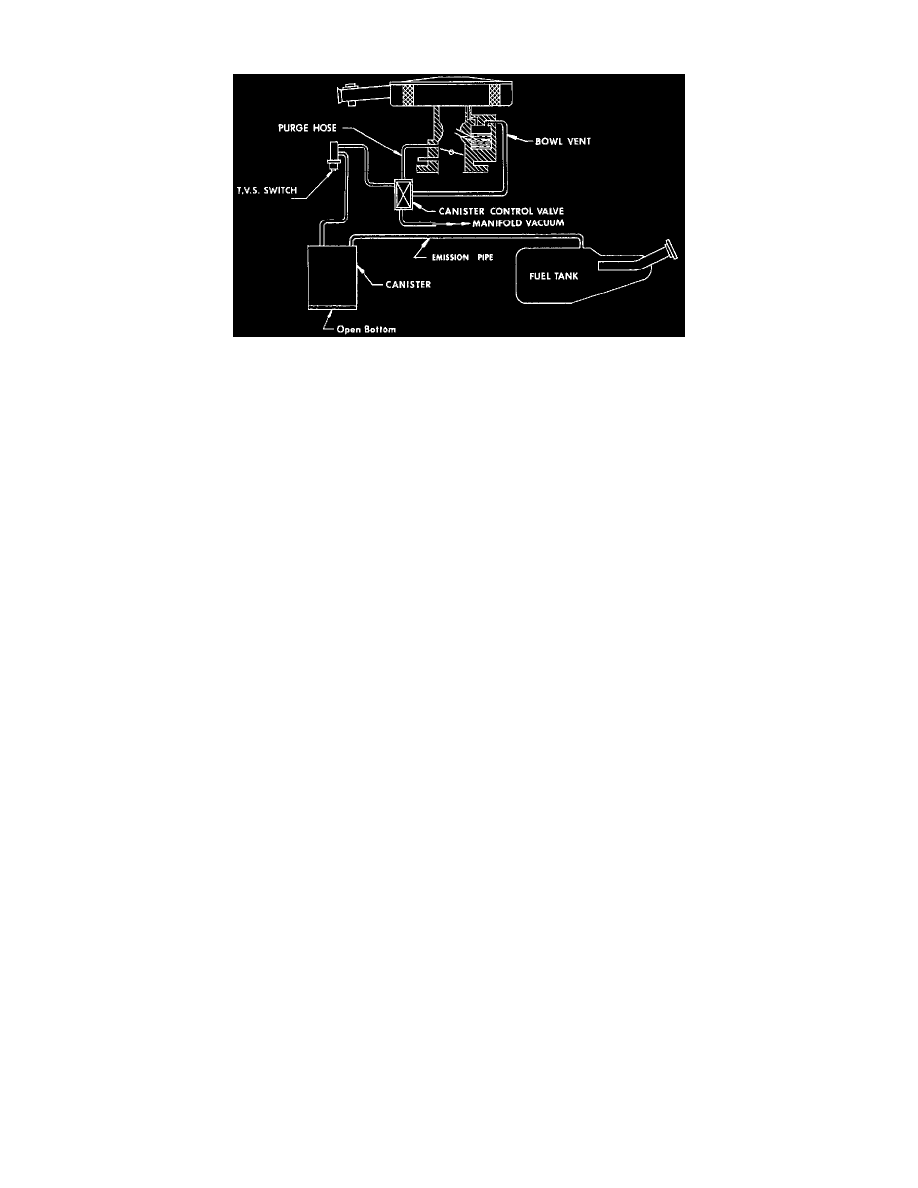Firebird V8-305 5.0L (1982)

Canister Purge Control Valve: Description and Operation
Fig. 75 Evaporative Emission System With Canister Control Valve
Some vehicles use a Canister Control Valve (CCV) to control float chamber fuel vapor storage and purging. The system--Fig 75--is comprised of a
dual tube vapor canister, a canister control valve mounted near the carburetor, and a thermal vacuum switch located in the intake manifold.
When the engine is shut off, manifold vacuum is lost at the CCV. The CCV then connects the carburetor bowl vent hose to the thermal vacuum
switch. If engine coolant temperature is above the calibration point of the TVS, the switch opens and allows fuel vapors to pass into the canister.
When the engine is restarted, manifold vacuum is directed to the CCV. This action closes the bowl vent hose port at the CCV and connects the
purge hose to the TVS. When the TVS opens, the canister is purged through the carburetor throttle body which sends ported vacuum through the
purge hose.
